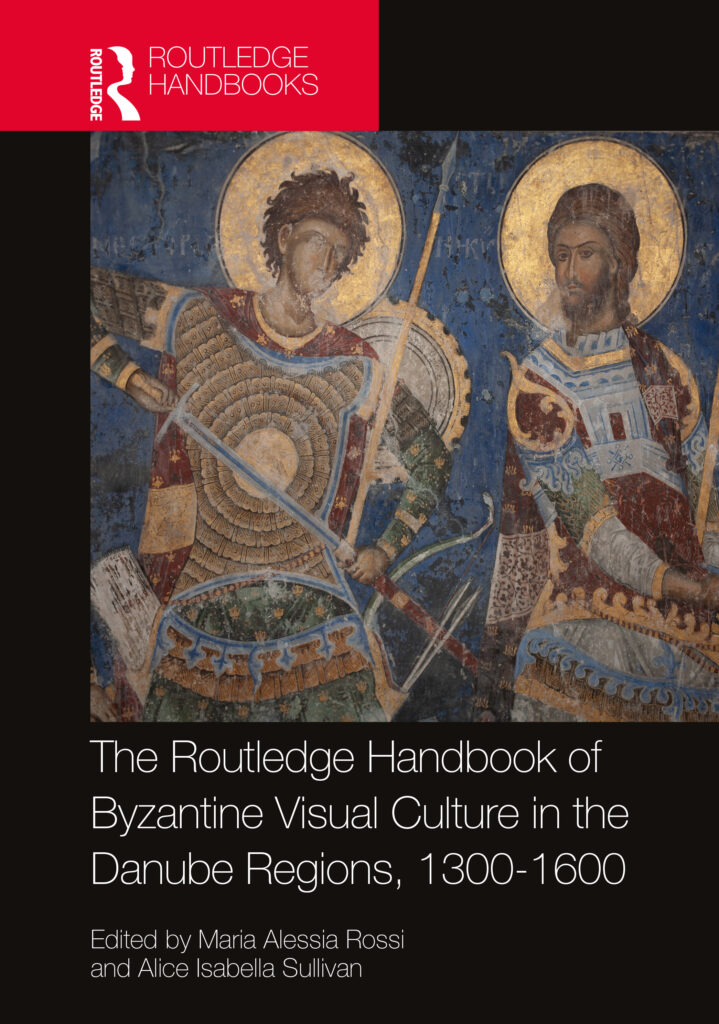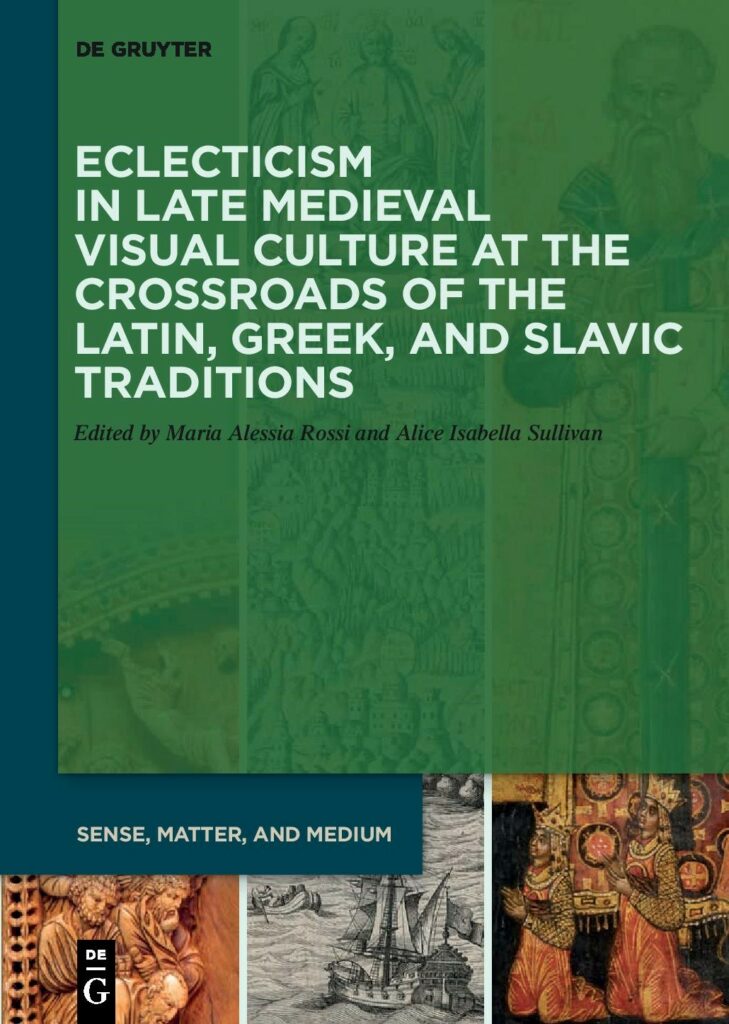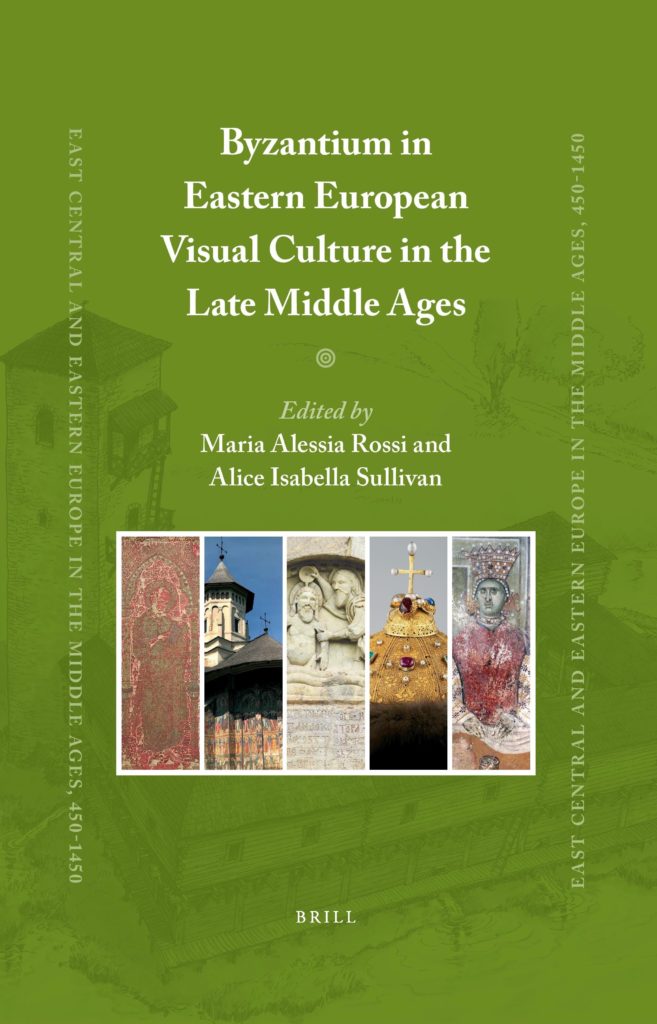
N.o.B. Publications
Books and Edited Volumes:
M. A. Rossi and A. I. Sullivan, eds., The Routledge Handbook of Byzantine Visual Culture in the Danube Regions, 1300-1600 (New York: Routledge, 2024).

This volume aims to broaden and nuance knowledge about the history, art, culture, and heritage of Eastern Europe relative to Byzantium. From the 13th century to the decades after the fall of Constantinople in 1453, the regions of the Danube River stood at the intersection of different traditions and the river itself has served as a marker of connection and division, as well as a site of cultural contact and negotiation.
The Routledge Handbook of Byzantine Visual Culture in the Danube Regions, 1300-1600 brings to light the interconnectedness of this broad geographical area too often either studied in parts or neglected altogether, emphasizing its shared history and heritage of the regions of modern Greece, Croatia, Serbia, Bulgaria, Romania, Hungary, Slovakia, Czechia. The aim is to challenge established perceptions of what constitutes ideological and historical facets of the past, as well as Byzantine and post-Byzantine cultural and artistic production in a region of the world that has yet to establish a firm footing on the map of art history.
The twenty-four chapters offer a fresh and original approach to the history, literature, and art history of the Danube regions, thus being accessible to students thematically, chronologically, or by case-study; each part can be read independently or explored as part of a whole.
***
M. A. Rossi and A. I. Sullivan, eds., Eclecticism in Late Medieval Visual Culture at the Crossroads of the Latin, Greek, and Slavic Traditions (series Sense, Matter and Medium: New Approaches to Medieval Material and Literary Culture, volume 6) (Berlin: De Gruyter, 2022).

A two-day international symposium titled “Eclecticism at the Edges: Medieval Art and Architecture at the Crossroads of the Latin, Greek, and Slavic Cultural Spheres (ca. 1300–1550)” (Princeton University, 5–6 April 2019) sits at the root of this publication. This volume builds upon the new worldwide interest in the global Middle Ages. It investigates the prismatic heritage and eclectic artistic production of Eastern Europe between the fourteenth and seventeenth centuries, while challenging the temporal and geographical parameters of the study of medieval, Byzantine, post-Byzantine, and early-modern art. Contact and interchange between primarily the Latin, Greek, and Slavic cultural spheres resulted in local assimilations of select elements that reshaped the artistic landscapes of regions of the Balkan Peninsula, the Carpathian Mountains, and further north. The specificities of each region, and, in modern times, politics and nationalistic approaches, have reinforced the tendency to treat them separately, preventing scholars from questioning whether the visual output could be considered as an expression of a shared history. The comparative and interdisciplinary framework of this volume provides a holistic view of the visual culture of these regions by addressing issues of transmission and appropriation, as well as notions of cross-cultural contact, while putting on the global map of art history the eclectic artistic production of Eastern Europe.
“The Eclectic Visual Cultures of Medieval Eastern Europe” (2021) – medievalists.net
***
M. A. Rossi and A. I. Sullivan, eds., Byzantium in Eastern European Visual Culture in the Late Middle Ages (series East Central and Eastern Europe in the Middle Ages, 450-1450, volume 65) (Leiden: Brill, 2020).

This edited volume includes the papers in the two sessions held at the 2018 Byzantine Studies Conference (4-7 October 2018; San Antonio, Texas) and additional essays. Byzantium in Eastern European Visual Culture in the Late Middle Ages, engages with issues of cultural contact and patronage, as well as the transformation and appropriation of Byzantine artistic, theological, and political models, alongside local traditions, across Eastern Europe. The regions of the Balkan Peninsula, the Carpathian Mountains, and early modern Russia have been treated in scholarship within limited frameworks or excluded altogether from art historical conversations. This volume encourages different readings of the artistic landscapes of Eastern Europe during the late medieval period, highlighting the cultural and artistic productions of individual centers. These ought to be considered individually and as part of larger networks, thus revealing their shared heritage and indebtedness to artistic and cultural models adopted from elsewhere, and especially from Byzantium.
“Byzantium in Eastern Europe” (2020) – medievalists.net
“Byzantium and Eastern Europe: An interview with Maria Alessia Rossi and Alice Isabella Sullivan” (November 2020) – Karwansaray Publishers Blog
Short notice, Museikon 4 (2020): 377.
REVIEWS
- Anđela Gavrilović, Review of Byzantium in Eastern European Culture in the Late Middle Ages, ed. M. A. Rossi and A. I. Sullivan (Leiden, 2020), in Nish I Vizantija XIX. simpozium, Nish 3-5 jun 2020. Zbornik radova. Edited by Miša Rakocija, 602-606. Niš: Nishki kulturni centar, 2021.
- Gerhard Jaritz, Review of Byzantium in Eastern European Culture in the Late Middle Ages, ed. M. A. Rossi and A. I. Sullivan (Leiden, 2020), in The Medieval Review, 21.11.31
***
Forthcoming projects:
The recordings of our Virtual Lecture and Conversation Series in 2022 titled From Kyivan Rus’ to Modern Ukraine: Virtual Conversations on History, Art, and Cultural Heritage, can be accessed here.
Stemming from this scholarly and public-facing initiative, we have started working on an edited volume with our colleagues at Dumbarton Oaks and Connected Central European Worlds, 1500-1700. This volume builds on the current reassessment of Ukraine’s marginalized position in the narratives of pre-modern Europe. It concentrates on the medieval and early modern periods, featuring Greek, Latin, and Slavic shared histories, thus bringing to the fore critical evidence to counter modern misrepresentations of Ukraine’s history and cultural heritage.
The contributions to this volume challenge Ukraine’s relegation to the margins, strive to present the region’s culture on its own terms, and apply a transcultural lens to the analysis of pre-modern Ukrainian objects, artifacts, and ideas as they moved between different cultural contexts, impacting local identities. Stay tuned!
***
Essays:
M. A. Rossi and A. I. Sullivan, “Why Orthodox Art in Eastern Europe Matters,” Public Orthodoxy, June 14, 2021.
M. A. Rossi and A. I. Sullivan, “Late Medieval Visual Culture in Eastern Europe,” Encyclopedia of the Global Middle Ages, Thematic Overview. London: Bloomsbury Academic, 2020.
***
Newsletter contributions:
M. A. Rossi and A. I. Sullivan, “Eclecticism at the Edges: Medieval Art and Architecture at the Crossroads of the Latin, Greek, and Slavic Cultural Spheres (c. 1300–c. 1550),” Newsletter of the Department of Art & Archaeology, Princeton University (Fall 2019): 25.
M. A. Rossi and A. I. Sullivan, “Medieval Art in Eastern Europe: New Perspectives,” International Center of Medieval Art Newsletter, ed. Heidi Gearhart, no. 2 (Summer 2019): 16-19.
